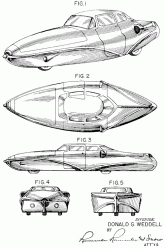|
CHANGE ?
Maybe
the target nowadays is not to discover what we are but
to refuse what we are. (Michael
Foucault)
Drawings
that changed the world 
(US
Patent ideas)Link
Andrew
Byrom FURNITURE AS LETTERS:
A set of 26 table and chair frames built from steel
tubing, Interiors forms a lowercase alphabet when viewed
from certain angles

WHAT RULES?
There
are no ultimate ends. Only games and more games. The
winner this round is the loser the next round. Only
the game is eternal. And the game is always the same,
if you never change the rules. G. Jones
rules
of VISUAL ARTS
?
Colour
makes people often act like insects.
Size
is irrelevant. Or it isn't?
Composition
is
thinking twice before you strike.
Technique
is
the way to show off.
Value
is
often mistaken for quantity.
Contrast
is
the first thing to be noticed and the last thing to
be remembered.
Tone
sets
or upsets the mood.
Texture
touching
with the eyes.
Focus
serves
to see what they don't see.
Sharpness
is invented by poor vision.
Skills
are
bad excuse for not using reason.
|